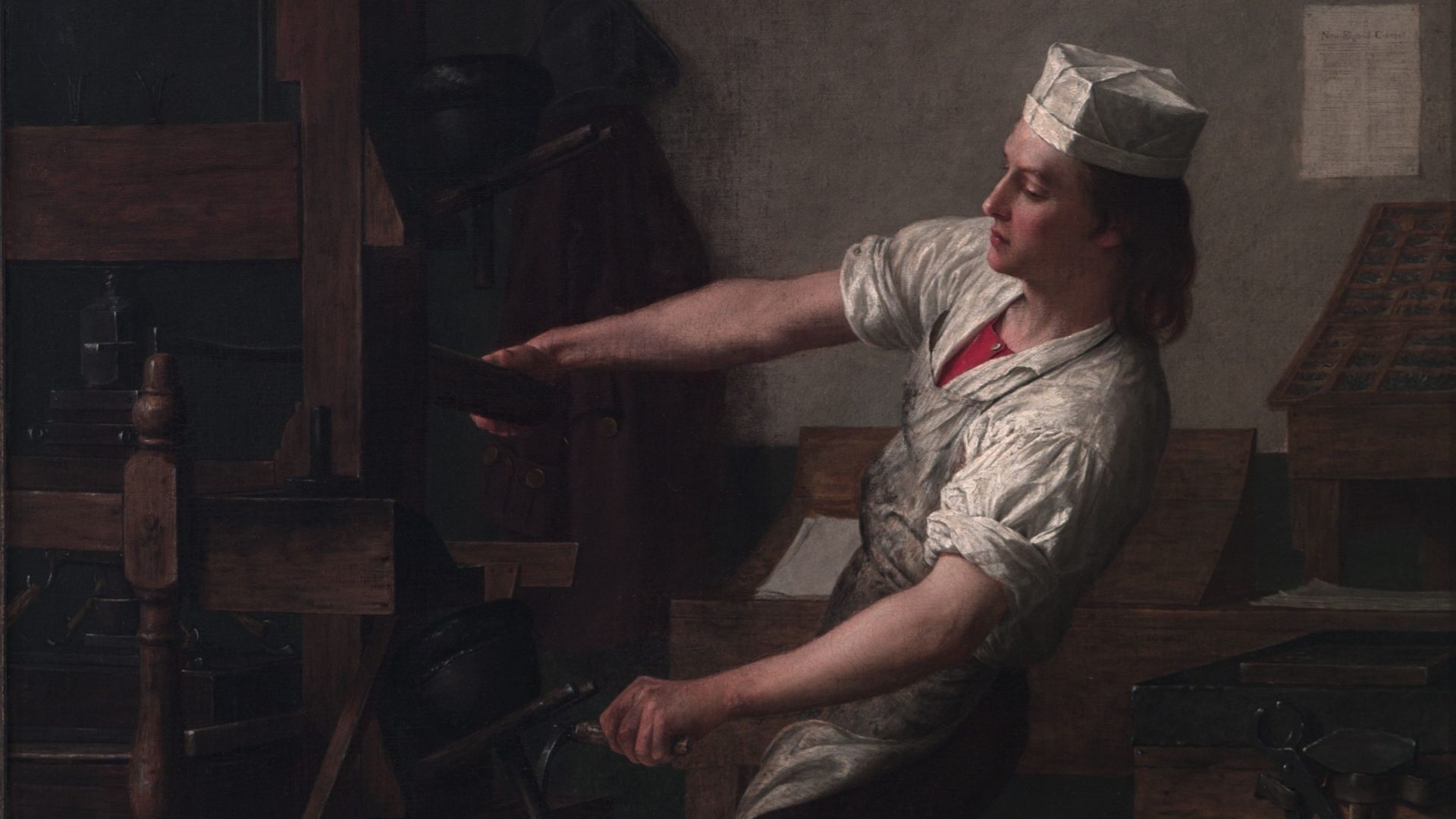
Young Franklin at the Press. By Enoch Wood Perry, 1876.
Albright-Knox Art Gallery, Buffalo, New York / Albright-Knox Art Gallery

Young Franklin at the Press. By Enoch Wood Perry, 1876.
Albright-Knox Art Gallery, Buffalo, New York / Albright-Knox Art Gallery

Albright-Knox Art Gallery, Buffalo, New York / Albright-Knox Art Gallery
Young Franklin at the Press. By Enoch Wood Perry, 1876.
Benjamin Franklin was so busy as an inventor, publisher, diplomat and U.S. founding father that it’s easy to lose track of his accomplishments.
Add one more to the roster: his early work in printing colonial paper currency designed to counter a constant threat of counterfeiting.
Franklin was an early innovator of printing techniques that used colored threads, watermarks and imprints of natural objects such as leaves to make it far harder for others to create knockoffs of his paper bills. A team at the University of Notre Dame has shed new light on his methods using advanced scanning techniques that reveal some of Franklin’s methods in greater detail — along the way, also providing one more reason Franklin appears on the $100 bill.
The new research, published Monday in the Proceedings of the National Academy of Sciences, describes data gathered with techniques such as spectroscopy and fluorescence tests, which use light to identify elements such as carbon, calcium and potassium in test samples. Researchers also used electron microscopes for imaging fine details.
The intent, said lead author Khachatur Manukyan, a Notre Dame associate professor of physics, was to learn more about the materials used by Franklin and his network of affiliated printers and how they served to distinguish their bills from cheaper copies.
“The goal was to decode what type of material they used,” Manukyan said in an interview. “And then we found some very interesting differences between this money and other printers.”
The researchers examined Franklin’s penchant for including watermarks, tiny indigo-dyed threads and “fillers” of special crystal in printed bills to create barriers to copycats. The paper also highlights Franklin’s use of “nature printing,” a technique by which he transferred the detailed vein patterns of tree leaves to printing plates.
These techniques raised numerous barriers to would-be copycats. Counterfeiters naturally sought to keep their costs low, and thus were loath to invest in improving their own printing techniques. Franklin’s fillers served to make bills hardier and thus extend their life over the cheaper paper preferred by criminals, while his dyed threads added another production barrier.
Similarly, Franklin’s nature-printed images produced fine details that were particularly difficult for less skilled printers to duplicate.
Later, though, the Revolutionary War brought on such a surge of counterfeiting — much of it, apparently, courtesy of the British Army — that the subsequent U.S. government shunned paper bills for decades in favor of coinage. It didn’t reconsider until the onset of the Civil War in 1861, when the federal government first authorized the printing of dollar bills called “greenbacks.”
Among the features in those U.S. banknotes were, of course, colored threads. These remain in use today, albeit in a more modern form. In today’s U.S. currency, for instance, the “security thread” is now a vertical band embedded in bills worth $5 and more that fluoresces under ultraviolet light.
The days of journalism’s one-way street of simply producing stories for the public have long been over. Now, it’s time to find better ways to interact with you and ensure we meet your high standards of what a credible media organization should be.